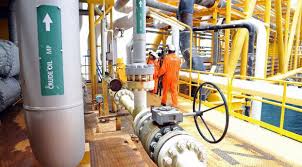In order to have full access of this Article, please email us on thedocumentco@hotmail.co.uk
Literature Review on Oil & Gas Industry
Literature Review on Oil & Gas Industry, The oil and gas industry is considered one of the most dangerous and often life-threatening industries to work in. Previously the most number of fatal injuries caused by work-related incidents was in this very industry. A notable example here is the Piper Alpha accident, on July 6, 1988, which resulted in the death of 167 oil rig workers (Macalister, 2013).
 However, after becoming extremely notorious for its life-threatening work environment the major stakeholders of this industry along with the government had to come up with stringent rules and regulations regarding the safety of the workers. The table below shows the injuries that have occurred about in the year 2004-2008.
However, after becoming extremely notorious for its life-threatening work environment the major stakeholders of this industry along with the government had to come up with stringent rules and regulations regarding the safety of the workers. The table below shows the injuries that have occurred about in the year 2004-2008.
Figure 1: Fatal occupational injuries in the oil and gas extraction industry, 2004-2008
(Oil and Gas Industry Fatal and Nonfatal Occupational Injuries Fact Sheet, 2010)
Not only were the rules strict but they were to be implemented completely and with full honesty so as to continue operating in the industry as per the guidelines set. New guidelines are to be presented on the measure of oil specialists flying out to and from seaward establishments by helicopter (BBC NE Scotland, Orkney & Shetland, 2014).
The significance of safety at work environments is very important. The following discussion will explain the analysis that has been done on the working conditions provided to the workers of oil and gas extraction.
Managing safety in the workplace: An attribution theory analysis and model
The article by David M. DeJoy talks about how to manage workplace safety and also analyzes the theory of attribution with proper analysis on the theory and its model. The writer is of the opinion that there exist causal attributions between the safety at workplace and the various acts that are taken by individuals to control and manage the safety. The author believes that there is a close association between these problems regarding workplace safety and the actions taken to prevent them.
The article states that the various acts are undertaken by the different individuals, responsible for managing workplace safety, are majorly derived from the attributions as compared to the actual and real causes. This paper starts the discussion by discussing at length about the about the debate on attribution theory and the causal analysis that is present in the management and implementation of safety at the workplace.
The paper also draws an attribution model of the process of managing safety at the workplace; this is a proposal by the author to be implemented in workplaces. This model defines the formation of the attributions that are concerned with safety at the workplace and the different aspects of individual as well as organizational concerns that are most closely probable to complicate and/or cause a bias in the inferences causal.
The article also examines the linkages that are identified between attribution-remedy as well as event-attribution; the most appropriate results of the examination are then presented from the research carried out on organizational and safety behaviour research. Finally, at the end of the paper, the recommendations are placed. These are the various safety program suggestions that are offered by the author to the workplaces as per the findings of the research and study carried out in this paper (DeJoy). The author very keenly describes that safety in the workplace of oil and gas extraction workers is very necessary.
Safety and environmental management in the oil and gas industry: A new model to enable line performance
This article by Andrew Clark, Richard…

Recent Comments